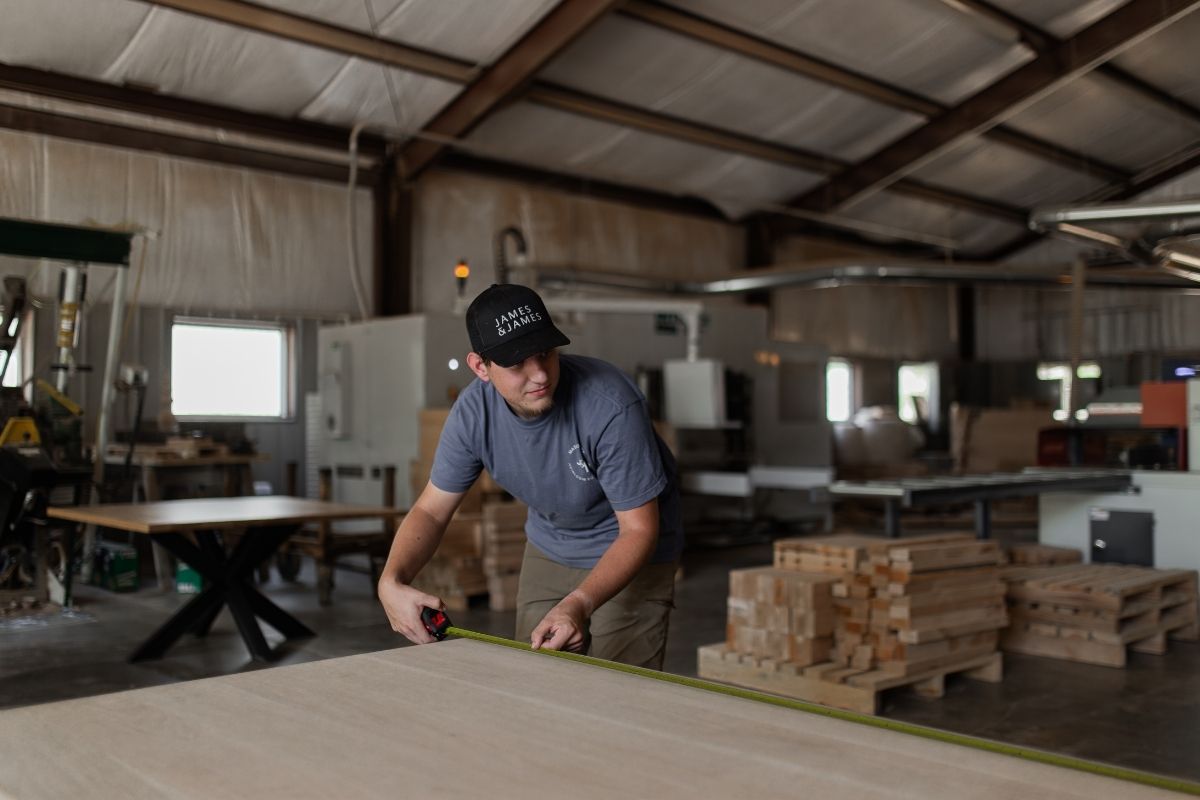How interior design works

How interior design works
Interior design is more than picking paint colors or throwing pillows on a sofa. It's a structured, professional process that transforms spaces through strategy, creativity, and technical expertise. Whether you're redesigning a single room or planning a full-scale renovation, understanding how the interior design process works can help you make informed decisions, set realistic expectations, and collaborate more effectively with your designer.
From the first consultation to the final styling touches, every phase serves a purpose. Designers combine form and function to reflect your lifestyle, needs, and aesthetic vision while managing budgets, timelines, and vendors behind the scenes. This guide breaks down each stage of the design journey, giving you a step-by-step look into how great interiors come together.
If you’re curious about what to expect when working with an interior designer—or considering becoming one yourself—this is the perfect place to start.
Initial Consultation and Client Discovery
The interior design process starts with a detailed consultation. This is where the designer gets to know the client’s needs, preferences, lifestyle, and goals. It sets the tone for the entire project.
This stage often includes:
-
Understanding the client’s vision and style
-
Establishing budget and timeline
-
Reviewing the space and any limitations
-
Identifying must-haves vs. nice-to-haves
This phase is critical for building trust and alignment. A clear brief helps avoid confusion down the road and ensures that the final result reflects the client’s expectations.
Site Evaluation and Measurements
Before any design can begin, the designer needs to understand the physical space. A thorough site visit allows the team to assess functionality, flow, and potential design challenges.
Key activities include:
-
Taking precise measurements of rooms, walls, windows, and doors
-
Noting architectural features and fixed elements
-
Evaluating light sources, ceiling heights, and existing materials
-
Identifying opportunities for improvement or modification
This information becomes the technical foundation for floor plans, furniture layout, and all material selections that follow.
Concept Development and Mood Boards
Once the basics are covered, the creative work begins. Designers translate the client's vision into tangible ideas using mood boards, sketches, and concept presentations.
This step helps:
-
Visualize style direction (modern, rustic, minimal, etc.)
-
Select color palettes, textures, and finishes
-
Showcase inspirational images, sample products, or renderings
-
Align client expectations before moving into deeper planning
Mood boards create excitement while also grounding ideas in a cohesive direction. It’s the bridge between abstract preferences and real design decisions.
Space Planning and Layout Design
Effective space planning is essential in interior design. This stage ensures every square foot of the space is functional, comfortable, and aligned with the client’s goals. Designers consider how people move through the space and how furniture will support the intended use.
What’s included:
-
Creating scaled floor plans and traffic flow paths
-
Deciding furniture size, placement, and proportions
-
Defining zones (e.g., dining vs. lounging areas)
-
Incorporating storage and accessibility features
This is where design shifts from vision to strategy, maximizing comfort and function while still preserving beauty.
Furniture and Material Selection
Furniture and materials bring the concept to life. Every choice for each room—from the living room to the office—must reflect the design style, meet performance needs, and stay within budget. This stage blends creativity with practicality.
Designers typically:
-
Select custom or pre-made furniture based on scale and use
-
Choose durable, aesthetic fabrics, finishes, and flooring
-
Source items from trusted vendors or makers
-
Prepare sample boards or 3D visualizations for approval
A good designer curates pieces that are not just stylish, but functional, balancing form, function, and long-term value.
Lighting Design and Fixture Planning
Lighting can completely transform a space. Whether natural or artificial, a layered lighting plan enhances mood, highlights architectural features, and improves day-to-day usability.
Key lighting elements:
-
Ambient lighting: general illumination (e.g., ceiling fixtures)
-
Task lighting: functional use (e.g., reading lamps, under-cabinet lights)
-
Accent lighting: dramatic effect (e.g., wall sconces, picture lights)
-
Decorative lighting: statement pieces (e.g., chandeliers, pendants)
Designers strategically place and select lighting to elevate the room’s tone, comfort, and overall atmosphere.
Color Schemes and Finish Selection
Choosing a color scheme is one of the most visible parts of the design process. The right colors and finishes create cohesion and help express the overall mood of the space. Designers consider both visual appeal and psychological impact.
Typical considerations include:
-
Wall colors, trim, and ceiling shades
-
Material finishes (wood, metal, glass, etc.)
-
Accent colors for depth or contrast
-
The effect of lighting on color perception
Samples and swatches are reviewed in natural and artificial light. The goal is to create harmony throughout the space and ensure everything feels intentional and balanced.
Decor, Art, and Accessories
Once the structure and furniture are in place, it's time to add the finishing touches. Accessories personalize a space and bring it to life. This step adds depth, character, and texture, making the design feel complete.
Designers may include:
-
Area rugs and throw pillows
-
Framed artwork or sculptural pieces
-
Plants and greenery for warmth
-
Books, trays, and curated shelf styling
These elements are often layered after installation to ensure balance and flow. Though small, they have a major impact on the overall atmosphere and visual storytelling.
Project Coordination and Contractor Management
Interior designers frequently collaborate with contractors, electricians, painters, and other specialists. Coordinating these professionals ensures the design vision is implemented accurately and on schedule.
Responsibilities often include:
-
Creating detailed spec sheets and schedules
-
Overseeing quality control during installs
-
Communicating changes to the client and crew
-
Troubleshooting issues that arise on-site
Strong project management keeps everything aligned from finishes to furniture delivery and ensures that the client’s expectations are met from start to finish.
Installation and Styling
Once the foundational elements are complete, installation and styling bring the space to life. This phase involves delivering and arranging furniture, installing light fixtures, and placing decor pieces to achieve the desired flow and ambiance.
Key steps include:
-
Placing rugs, sofas, tables, and large items
-
Hanging art and adjusting lighting
-
Arranging decor for balance and visual interest
-
Making final tweaks to optimize spatial flow
Designers often do a final walk-through to refine every corner. This stage is when all the planning and selections come together into a finished, cohesive interior.
Final Reveal and Client Walkthrough
The last step in the interior design process is the client walkthrough. This moment offers a chance to present the finished space, ensure every element aligns with expectations, and address final details.
Typical steps include:
-
Reviewing each room’s design goals
-
Addressing any outstanding adjustments
-
Offering maintenance or styling tips
-
Collecting feedback and future referrals
A successful walkthrough builds client satisfaction and trust. It also marks the beginning of the space’s new life, whether it’s a home, office, or hospitality setting, styled and ready to use.
Interior design is a dynamic process that blends planning, creativity, and technical execution. Each step builds upon the last to create spaces that are both beautiful and functional. Whether you're hiring a designer or tackling a project yourself, understanding the full journey ensures smoother collaboration and better outcomes. With the right process, any space can be transformed with purpose and style.




0 comments
Add a comment